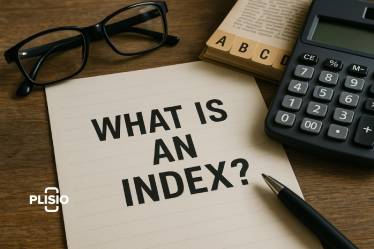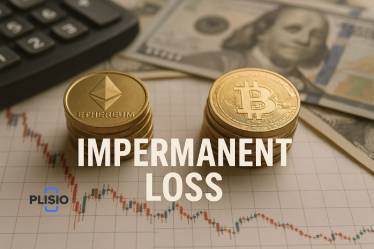Crypto Terms You Should Know in 2025

As we enter 2025, uncertainty looms over traditional financial markets due to global factors like the weakening yen and the drop in the S&P 500. At the same time, Bitcoin (BTC) continues to reach new all-time highs, generating buzz and increasing global cryptocurrency adoption. More than ever, owning digital assets is becoming a norm, even among everyday retail investors.
Still, many newcomers find cryptocurrency confusing or intimidating. One of the biggest barriers? Crypto is full of complicated terminology. Take Monacoin — Japan’s first cryptocurrency, launched in 2013. Many missed out on early adoption opportunities simply because they didn’t understand terms like "meme coin." Fast forward to 2025, and Monacoin is still a relevant player in the altcoin space.
In this guide, we’ll break down essential cryptocurrency terms and trending blockchain concepts — explained simply, for beginners looking to start their crypto journey in 2025.
Core Cryptocurrency Terms
Blockchain Blockchain is the underlying technology that powers all cryptocurrencies. It records transactions in blocks and links them together in a chronological chain. Thanks to its decentralized and immutable nature, blockchain ensures security and transparency without the need for central authorities.
Crypto Wallet A cryptocurrency wallet is a digital tool that stores your crypto assets. There are hot wallets (online) and cold wallets (offline), each offering different levels of convenience and security.
Public Key & Private Key These keys are essential for managing your crypto. A public key is your wallet address (safe to share), while a private key is your password (never share it). Losing your private key could mean losing access to your funds permanently.
Crypto Mining Mining is the process of verifying blockchain transactions and creating new coins. Miners use powerful computers to solve complex problems and earn rewards in the form of new cryptocurrency tokens.
Trading & Investment Terms in Cryptocurrency
CEX (Centralized Exchange) A centralized crypto exchange is operated by a company that acts as a middleman between buyers and sellers. Popular examples include Binance, Coinbase, and Japan’s BitFlyer. These platforms often support fiat-to-crypto trading.
DEX (Decentralized Exchange) Unlike CEXs, decentralized exchanges like Uniswap or SushiSwap allow users to trade directly from their crypto wallets, providing more control and security.
Gas Fees These are the transaction fees paid to process and validate operations on networks like Ethereum. In 2025, Ethereum gas fees have decreased by over 35% compared to 2022, thanks to scaling solutions like Layer 2 rollups.
Staking Crypto Staking lets you earn passive income by locking up your tokens in a blockchain protocol. As of Q1 2025, over $150 billion worth of crypto is staked globally, up 25% year-over-year.
Hard Fork A hard fork occurs when a blockchain splits into two versions, usually due to protocol disagreements. Notable examples include Ethereum Classic (ETC) and Bitcoin Cash (BCH).
Trending Crypto Terms in 2025
Meme Coin Meme coins are fun, community-driven cryptocurrencies inspired by internet culture. Although often volatile, coins like Dogecoin, Shiba Inu, and Monacoin continue to attract investors — with the meme coin market cap exceeding $35 billion in early 2025.
DeFi (Decentralized Finance) DeFi platforms allow users to borrow, lend, and trade crypto assets without banks. In 2025, the DeFi market exceeds $100 billion in total value locked (TVL), reflecting strong user interest in decentralized financial tools.
NFT (Non-Fungible Token) NFTs represent ownership of unique digital assets, like artwork or collectibles. Despite cooling hype, the NFT market saw over $20 billion in transaction volume in 2024, with new use cases in gaming and identity.
Web3 Web3 refers to a decentralized internet built on blockchain. It promises user ownership of data, privacy, and resistance to censorship. Major tech platforms are now integrating Web3 components into their ecosystems.
Metaverse The metaverse is a collective virtual space where users interact via avatars. NFTs and cryptocurrencies play key roles in powering this economy. Global investment in metaverse projects topped $120 billion by early 2025.
DAO (Decentralized Autonomous Organization) A DAO operates based on smart contracts and member voting. In 2025, over 2 million users globally participate in DAOs, governing everything from investment funds to creative projects.
Pros and Cons of Entering the Crypto Market in 2025
Pros:
- Decentralization: Full control over digital assets without banks or intermediaries.
- High Potential Returns: Cryptocurrencies like Solana and Avalanche have shown triple-digit growth year-over-year.
- Global Accessibility: Crypto is borderless — anyone with internet access can participate.
- Transparency: All blockchain transactions are publicly recorded.
- Innovation: New tech like zero-knowledge proofs and cross-chain bridges continue to push the space forward.
Cons:
- Volatility: Crypto prices remain highly unpredictable.
- Scams & Rug Pulls: Investors should conduct due diligence to avoid fraudulent projects.
- Technical Complexity: Understanding wallets, seed phrases, and protocols can be daunting.
- Regulatory Uncertainty: Governments worldwide are still developing crypto regulations.
- Environmental Concerns: Proof-of-work blockchains like Bitcoin still consume significant energy.
Expert Insights on the Future of Crypto in 2025
Industry experts remain optimistic. According to CoinMetrics analyst Linda Zhao, “Bitcoin is increasingly being seen as a macro hedge against inflation and currency devaluation, especially in emerging economies.”
Meanwhile, Ethereum co-founder Vitalik Buterin emphasized the growing importance of scalability in a recent interview: “Layer 2 solutions are the key to mass adoption — they make Ethereum usable for everyone.”
Venture capital firm a16z noted in its Q1 2025 report that Web3 gaming, real-world asset tokenization, and decentralized AI are the top sectors to watch this year.
Final Thoughts
Cryptocurrency may seem overwhelming at first, but understanding these beginner-friendly crypto terms — and keeping up with market stats and expert opinions — can give you a major edge in 2025. Whether you're investing, trading, or just exploring blockchain technology, staying informed is your best strategy in this fast-evolving digital economy.



